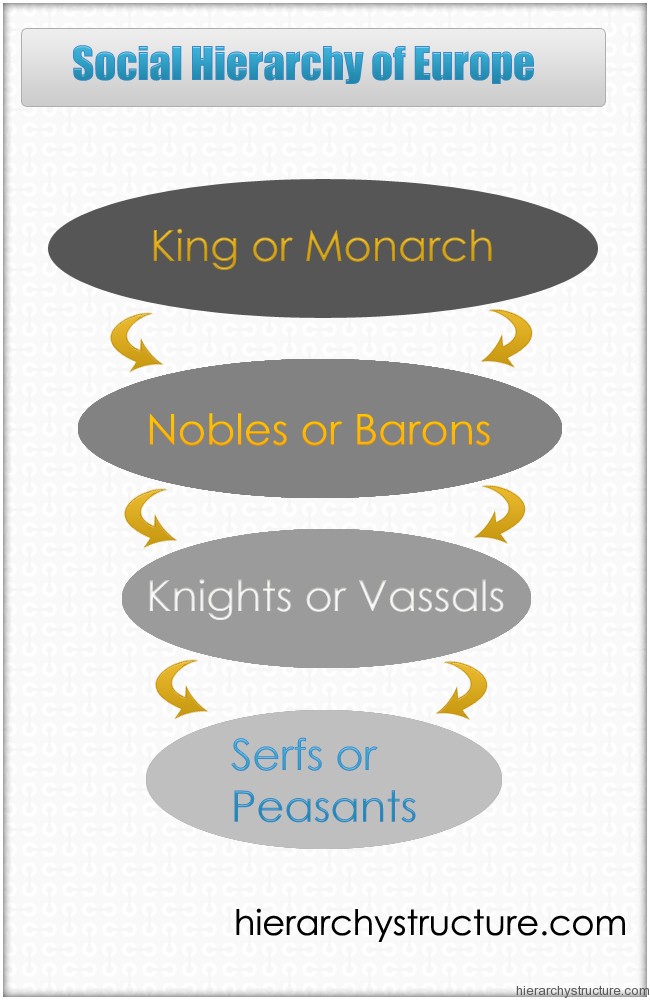In Europe, the social hierarchy was based on the feudal system that was prevalent during the early centuries. Feudal system prevailed from 9th to 15th century in Europe and it influenced the social hierarchies all over Europe to a great extent. Since the majority of people were related with agriculture and land during this time, the social society also got divided on the basis of who owns how much land.
The people who possessed greater amount of lands enjoyed greater privileges and rights as compared to the people who owned lesser amounts of land or did not possess any. In the social hierarchy of Europe, the Kings were placed on the top most position of the hierarchy that was followed by the knights, the nobles and peasants. Following are the major levels in the social hierarchy of Europe:
- King or Monarch
- Nobles or Barons
- Knights or Vassals
- Serfs or Peasants
King or Monarch
On the top most position was the king in the European social hierarchy because King owned all the land in the entire kingdom. All the assets in the kingdom pertaining to land were controlled by King and he was responsible for dividing or giving the land to the classes below him on lease or as gifts. The basic tradition was that in return of land, the lower class was required to swear the oath of remaining faithful to the King and serving to him in the time of necessity. Generally the King distributed the land in barons in return of their services. All the judicial or execution related powers were in the hand of king.
Nobles or Barons
After the king, the class of Nobles had the highest power. This class included hereditary nobles, dukes, barons etc. These were the people whose power and privileges were bestowed on them because of their blood relations. These were the citizens who were majorly responsible for ruling the provinces and arranging the fighting men (skilled knights) for the king during wars. They were also involved in designing currency, establishing the legal hierarchy systems and also for framing the tax regulation schemes for the class below them.
Knights or Vassals
These were the people who were given the lands on lease by barons or nobles in return of their military services to the king during the time of the war. These were also responsible for protecting the barons and their families. They used to distribute their land which they have got from nobles to the people on the lower levels of society in return of their services. They were allowed to set their rent and taxation guidelines pertaining to their distribution of their feuds or lands.
Serfs or Peasants
This was the lowermost level of the social hierarchy of Europe. These were required to provide food to the superior classes in the society and hence they engaged themselves majorly into agriculture. Since they did not own the land and hence were required to pay certain taxes in both cash & kind to the people who gave them lands.

